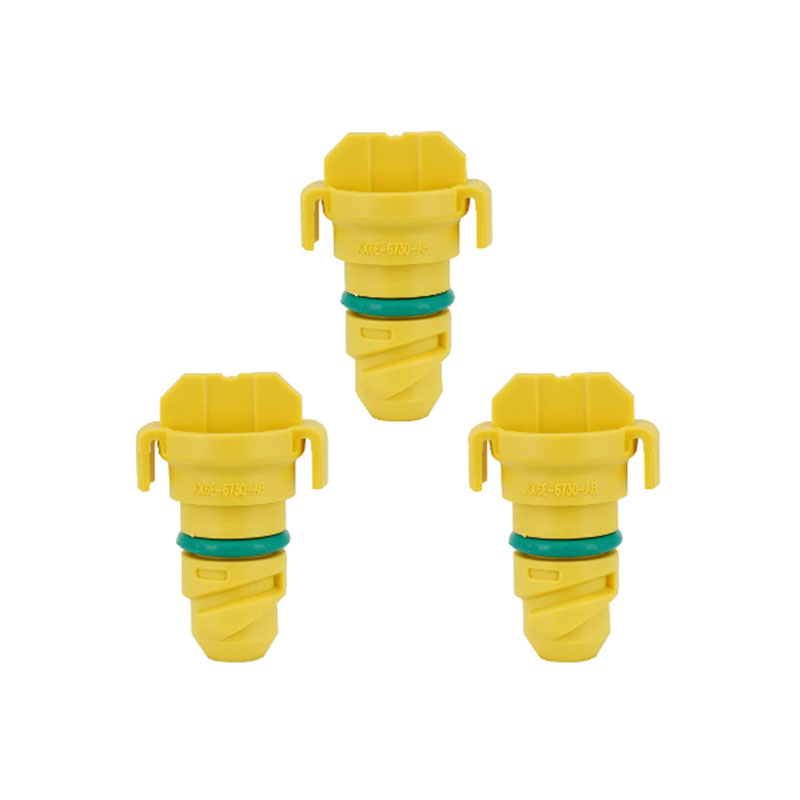High-Quality Oil Seal 30 52 10 for Enhanced Performance and Durability in Machinery Applications
Understanding Oil Seals The 30x52x10 Specification
Oil seals play a crucial role in various mechanical systems, serving as vital components in maintaining the efficiency and longevity of machinery. One common specification you may encounter is the 30x52x10 oil seal, denoting its dimensions in millimeters. In this article, we will delve into what oil seals are, their functions, and the significance of the 30x52x10 size.
What is an Oil Seal?
An oil seal, also known as a lip seal, is designed to prevent the leakage of lubricants and to protect against the entry of dirt and contaminants. These seals are typically made from elastic materials, allowing them to conform and adapt to the moving parts of machinery. Their primary function is to create a barrier that prevents fluids from escaping from the area where they are needed and to keep harmful elements out.
Importance of Oil Seals in Machinery
Oil seals are integral in numerous applications, from automotive engines to industrial machinery. In automotive applications, they are often found in gearboxes, rear axle assemblies, and engine compartments. Their role in ensuring that lubricating oil stays within designated areas allows mechanical components to function efficiently, reducing wear and tear.
In industrial applications, oil seals help maintain the necessary lubrication in rotating equipment, such as pumps and motors. A well-functioning oil seal contributes to overall operational efficiency, minimizes downtime, and ultimately reduces maintenance costs.
The 30x52x10 Specification Explained
The designation “30x52x10” provides essential information about the oil seal’s dimensions
oil seal 30 52 10

- 30 mm This is the inner diameter of the seal. It represents the size that fits onto the shaft or hub of the component being sealed. - 52 mm This refers to the outer diameter of the seal. It indicates the size of the housing or bore into which the seal is installed. - 10 mm This dimension represents the thickness of the seal, which is crucial for ensuring an effective seal and proper fit.
Choosing the correct size is vital for the seal's effectiveness. An improperly sized oil seal can lead to leaks, causing severe damage to the machinery and increasing operational costs.
Material Composition and Performance
Oil seals can be made from various materials depending on the application, including rubber compounds, thermoplastic elastomers, and polyurethane. Each material offers unique advantages; for instance, synthetic rubber can withstand higher temperatures and offer better chemical resistance. Therefore, when selecting an oil seal, consideration of the working environment, temperatures, and potential contaminants is essential.
Installation and Maintenance
Proper installation of the 30x52x10 oil seal is critical to its functionality. It’s important to follow manufacturer guidelines during this process to avoid damage to the seal or the surfaces it contacts. Regular maintenance checks can help identify potential issues early, such as signs of wear or leakage, allowing for timely replacements before more significant problems arise.
Conclusion
Oil seals, including the 30x52x10 specification, are vital components that ensure the smooth operation of mechanical systems across various industries. Their ability to keep lubricants contained while preventing contaminants from causing damage cannot be overstated. Understanding their dimensions, materials, and functions helps in selecting and maintaining the right seals, ultimately contributing to machinery efficiency and longevity. As technologies evolve and machinery demands increase, the role of high-quality oil seals will remain indispensable in engineering and manufacturing sectors.
-
Understanding Automotive Oil Seals: Essential Components for Engine and Shaft Protection
News Jul.30,2025
-
The Importance of Heavy Duty Seals in Industrial and Residential Applications
News Jul.30,2025
-
Exploring Industrial Oil Seals: From Felt Oil Seals to TTO and CFW Solutions
News Jul.30,2025
-
Essential Guide to Oil Seals: From Radial to Metal-Cased Seals for Industrial Reliability
News Jul.30,2025
-
Choosing the Right Oil Seals and Gaskets for Industrial and Automotive Applications
News Jul.30,2025
-
Cassette Seals: Durable Sealing Solutions for Harsh Environments
News Jul.30,2025
-
Understanding the Front Main Engine Seal: Purpose, Maintenance, and Installation
News Jul.29,2025
Products categories















